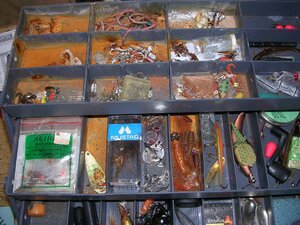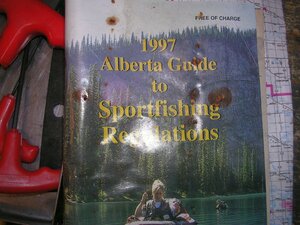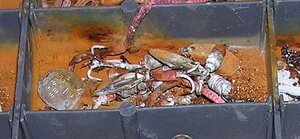Being 65+ I no longer need a fishing licence... so I dug out my tackle box to have a look see as to what I have.....

Not looking too promising LOL....

And that would be the last time I was in it.....
All of my coveted trout spoons dissolved.... What's with that? My Pike spoons survived but the trout spoons went poof into a pile of dust including the hook????

Not looking too promising LOL....

And that would be the last time I was in it.....
All of my coveted trout spoons dissolved.... What's with that? My Pike spoons survived but the trout spoons went poof into a pile of dust including the hook????
Last edited:


